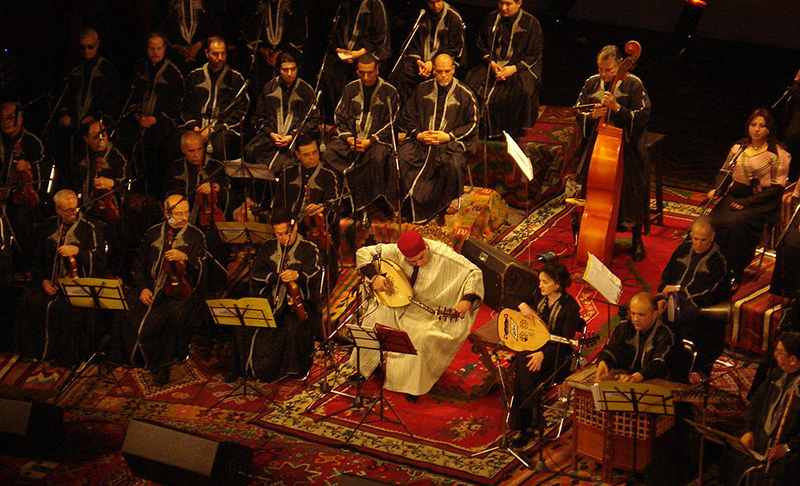
The history of Tunisian music can be traced back to the ancient Malouf, an Andalusian classical music tradition that was brought to Tunisia by the Moors in the 15th century. The Malouf, which means "made easy" in Arabic, is a complex form of music that involves intricate melodies, improvisation, and poetry. The Malouf is usually performed with traditional instruments such as the oud, violin, kanun, and qraqeb (a pair of metal castanets).
Some of the most notable Malouf artists include Salim Fergani, Anouar Brahem, and Ali Sriti. Ali Sriti, a renowned Tunisian oud player, was instrumental in popularizing the Malouf in the 20th century. His grandfather, Mohamed Sriti, was a well-known composer and performer of Malouf who helped preserve the tradition through his compositions and performances.
Over the centuries, Tunisian music has evolved and incorporated various influences from neighboring countries and cultures. The Nouba, a medieval North African classical music form, is one such example. The Nouba combines elements of Arabic, Berber, and Turkish music and is performed with traditional instruments such as the oud, violin, and bendir (a frame drum).
In the 20th century, Tunisian music underwent significant changes with the emergence of nuevo styles and fusions. Artists such as Abdel Wahab, Hedi Jouini, and Khelil Belamkounda incorporated Western musical elements into their compositions, creating a unique sound that blended traditional Tunisian music with contemporary styles.
Today, Tunisian music is a vibrant mix of traditional and modern styles, encompassing a wide range of genres such as Raï, hip hop, reggae, and electronic dance music (EDM). The Raï, a popular form of Tunisian music that originated in Algeria in the 1920s, is characterized by its poetic lyrics, catchy rhythms, and social commentary. Some of the most famous Raï artists include Cheb Khaled, Faudel, and Cheb Mami.
Hip hop and reggae have also gained popularity in Tunisia, with artists such as Balti, Klay BBJ, and Hamzaoui Med Amine gaining a large following. EDM and electronic music have also made their mark in Tunisia, with artists such as Pomo, DJ Danjer, and DJ Assad making a name for themselves on the international stage.
Some of the most notable modern Tunisian artists include Emel Mathlouthi, who gained international fame for her powerful performance in the 2011 Tunisian Revolution, and Dhafer Youssef, a renowned oud player and composer who has worked with the likes of Bobby McFerrin and the London Philharmonic Orchestra.
Raï, a popular form of Tunisian music that originated in Algeria, has influenced Tunisian music by introducing poetic lyrics, catchy rhythms, and social commentary. Some of the most famous Raï artists include Cheb Khaled, Faudel, and Cheb Mami.
Women play a significant role in the Tunisian music scene, with artists such as Emel Mathlouthi, Ghalia Benali, and Sabrine Jenhani gaining international recognition for their talent and contributions. Many female artists sing about social issues, injustice, and the need for change, making their voices an important part of Tunisian society.
```
In conclusion, the music scene of Tunisia is a diverse and vibrant tapestry of different styles, genres, and influences. From the ancient Malouf to the modern electronic dance music, Tunisian music is a reflection of the country's rich cultural heritage and its people's resilience, creativity, and spirit.